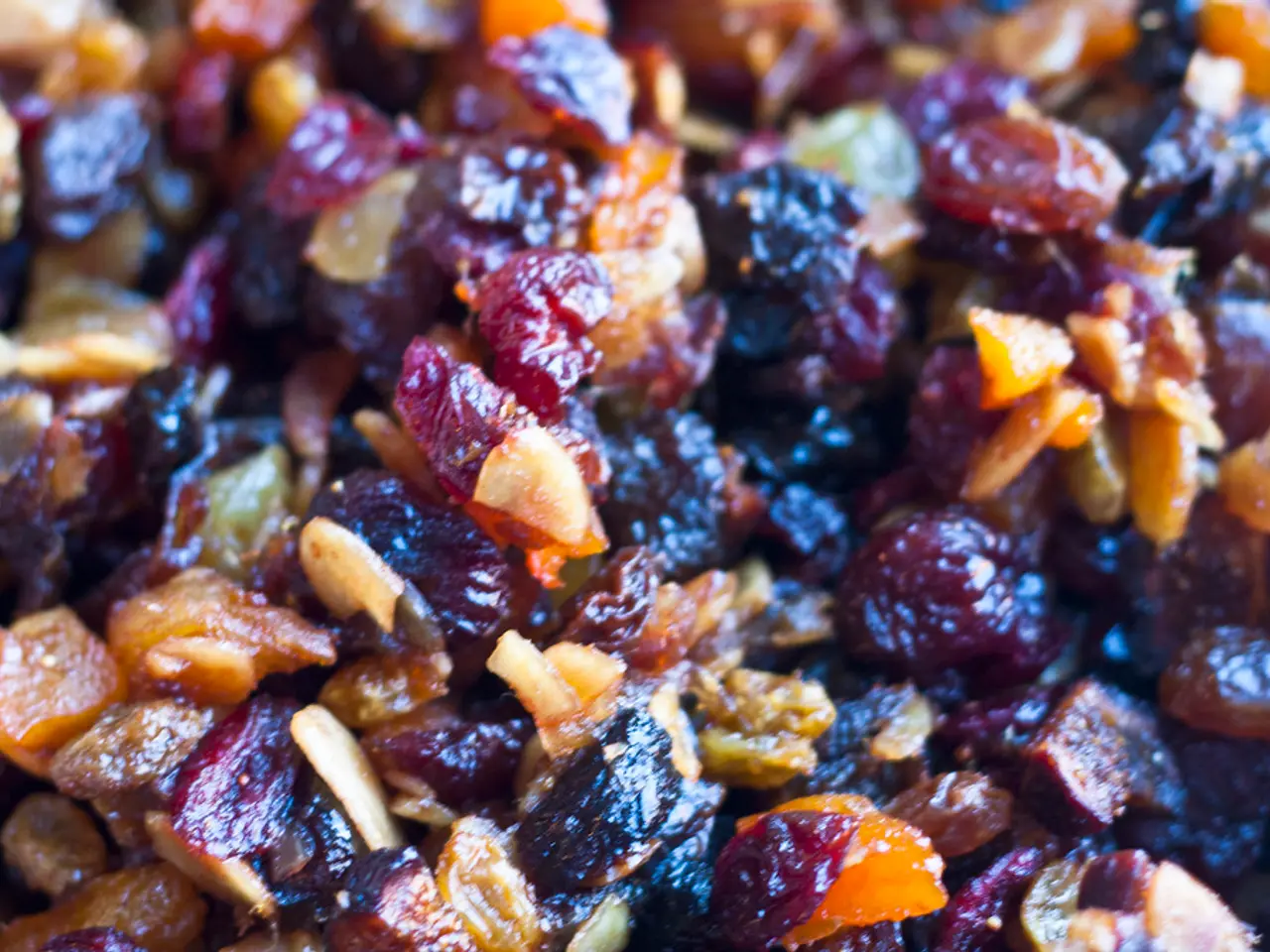Enhance Milk Yield and Animal Wellness in Arid Regions through Straightforward Feed Strategies
Improving Livestock Nutrition in Arid India: The Benefits of Multi-Nutrient Feed Blocks and Mixtures
In the arid regions of India, livestock farmers face numerous challenges, including mineral and vitamin deficiencies, feed scarcity, and economic constraints. However, a promising solution has emerged in the form of Multi-Nutrient Feed Blocks (MNFB) and Multi-Nutrient Mixtures (MNM). These cost-effective feed technologies have been shown to significantly enhance livestock nutrition and productivity.
During a recent trial, 3-month-old male goat kids were treated with MNM for a period of 60 days. The sale price for the treated kids reached Rs. 6,400, while the non-treated ones only fetched Rs. 5,350. After accounting for the MNM cost of Rs. 270 per kid, farmers saw an additional profit of Rs. 780 per animal.
The benefits of MNFB and MNM extend beyond financial gain. These nutrient formulations have been scientifically proven to improve growth rates, increase milk production, and enhance reproductive health in livestock [1]. They also aid in reducing parasite burdens, contributing to healthier animals and better productivity [1].
Moreover, MNFB and MNM improve palatability, encouraging better feed consumption, which is crucial for livestock in harsh arid environments where feed scarcity is common [2]. The fodder blocks, similar in concept to MNFB, are compact, easy to store, and transport, making them suitable for the challenging logistics of arid areas [3].
In terms of economic benefits, studies and field trials in India indicate that using such blocks can result in higher net monetary returns due to improved production efficiency and reduced disease incidence [1][3]. Government initiatives, such as the National Livestock Mission and the Animal Husbandry Infrastructure Development Fund, promote the development and adoption of feed supplements and infrastructure for livestock feed production in India, providing subsidies and support for these technologies to farmers and entrepreneurs [2][3].
Another significant advantage of MNFB and MNM is their affordability and accessibility. They can be produced in the village using local materials, making them accessible to small and marginal farmers [4]. The trials also indicate that low-cost, farmer-friendly nutrition practices can enhance the productivity of animals in dry environments [4].
Perhaps most importantly, MNFB and MNM provide a solution to the scarcity of green fodder by substituting it with energy- and protein-rich alternatives. Over the two-month trial period, the average body weight of the treated kids increased by 5.3 kg [4].
In summary, MNFB and MNM enhance livestock nutrition in arid Indian regions by addressing mineral deficiencies, improving health and productivity, facilitating better feed intake, and enabling economically viable livestock management under difficult environmental conditions [1][2][3]. These innovative feed technologies offer a promising solution for improving the livelihoods of small and marginal farmers in India's arid regions.
[1] Impacts of on-farm supplementation of multi-nutrient mixtures on productivity, health, and profitability of small ruminants in dryland grazing systems in India
[2] Addressing the challenges of livestock production in arid ecosystems: The role of feed blocks and mineral supplements
[3] Economic analysis of feed supplementation for small ruminants in arid regions of India
[4] A field trial of multi-nutrient mixtures for small ruminants in dryland grazing systems in India
The innovative feed technologies, Multi-Nutrient Feed Blocks (MNFB) and Multi-Nutrient Mixtures (MNM), have been scientifically proven to boost health and wellness, specifically in nutritional aspects, in livestock, as they enhance growth rates, increase milk production, and improve reproductive health [1]. Additionally, these nutrient formulations aid in reducing parasite burdens, contributing to healthier animals and better productivity [1].




